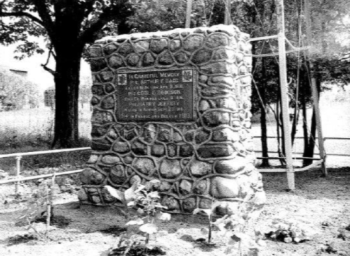Back in 1955, a quaint little pioneer town was valiantly attempting to continue to thrive as a proper rural community. Little known to many in this rural community,the 1948 Township of North York’s Official Plan was about to set the wheels in motion for rapid development designs. It was about this time when Emery Village was visited by Italian- Canadian immigrant and builder, Camillo Domenico Milani.

An opportunist and builder, Milani,was about to take exclusive control of any and all proposed development for this quaint little village. Milani founded his own building and development company (Signet Properties), and with trusted business partner and financial backer, J.C. Vanhuse, the two men commenced the building of a never-before-seen massive commercial development right in the heart of the farmland that makes up the boundaries of the Emery Village Business Improvement Area.
As calculated, Milani’s commercial developments also expectedly navigated to the building of modern-day housing developments and subdivisions that make up the neighbourhoods of Daystrom, Bluehaven, Gracedale and Gulfstream of today.
Milani was obviously drawn to the main intersection of Emery that was at the corner of Finch Avenue and Weston Road.In 1955, Emery’s Public School and church stood prominently at the intersection along with a significant lighting rod alongside the community’s WW1 cenotaph memorial.
Today, the Emery Village intersection looks absolutely nothing like it did some 50-odd years ago, yet the reviving of the once proud area’s heritage, is a personal mission of mine. Emery Village historic markers are now placed throughout the Emery Village BIA. They reside throughout Milani’s old digging and stomping grounds. These commemorative markers have been created by the Emery Village BIA complete with photographs and descriptions of Emery Village’s previous tenants. It was interesting to have learned that Huron Indians notably inhabited the community along the banks of the Humber River, and the Black Creek, yet they abandoned the Emery area in and around 1650 to move north to Holland Landing near Barrie.
Sometime after, Emery’s settlers began setting up their pioneer homesteads with Issac Devins and Mary Chapman first arriving in 1795. By the mid to late 1800s, Emery Village was established as a quaint little rural town with a train station, a church, a school, a blacksmith shop, a shingle mill, a wagon shop, a general store and eventually a post office.
A magnificent looking two story brick schoolhouse was built by the community in 1914 at the intersection of Finch Avenue and Weston Road and was used up until 1958. The closing of the school was a result of the newly built Daystrom Drive Public School’s opening in 1959. The old Emery schoolhouse was eventually bulldozed in 1963 by the Toronto District School Board after leaving it sitting for four years boarded up and abandoned.

At the same time, Emery’s Memorial Cenotaph was also razed in 1963. I was under the impression that it certainly must be some type of crime in Canada to level a WWI memorial, especially without rationale? Times have certainly changed since 1963. The rebuilding of Emery’s Cenotaph needs to be a project that the community now engages in. It needs to be completely restored and re-erected in a spot within our community where we can once again be proud. The rebuilding of Emery’s Train Station (Go Train) is something else that also needs to be done.
We all can currently see that Medallion Properties is initiating a revitalization of their property at the heart of Finch Avenue and Weston Road, and the Emery Village BIA continues to create and approve exciting plans for many magnificent developments that will ultimately provide the community with structures that complement and commemorate the rich history from the community’s past.
These commemorations will serve to make us proud of our previous residents and our communities. Lest we forget. See you at the Cenotaph.

















